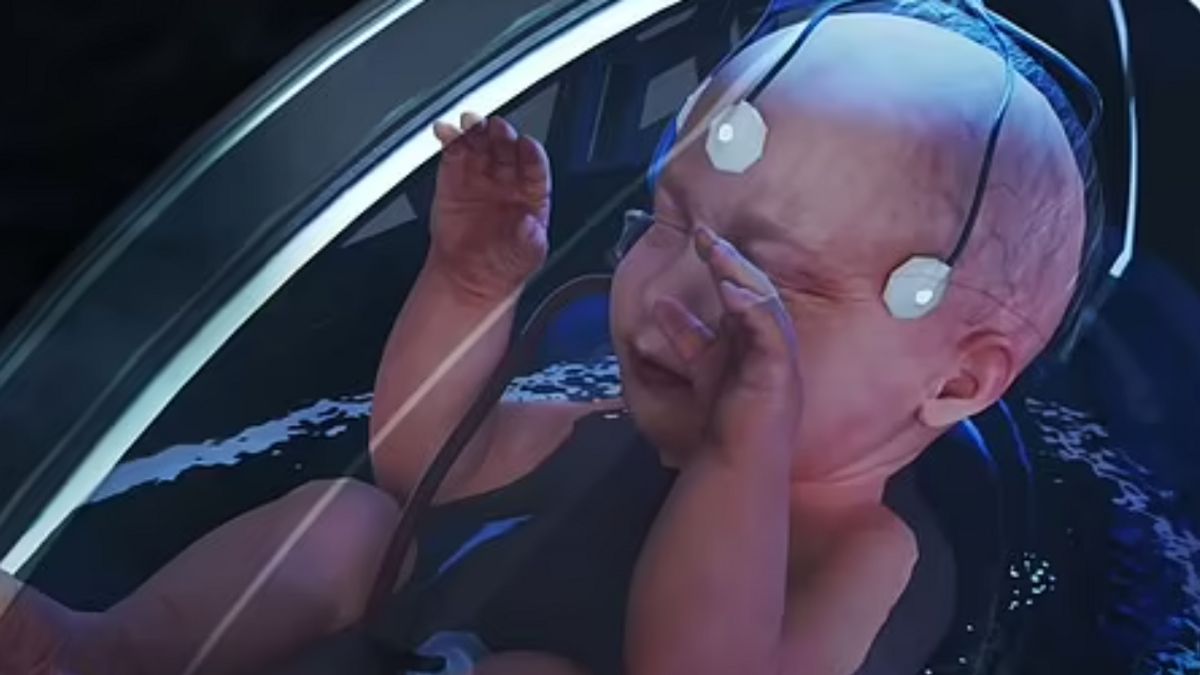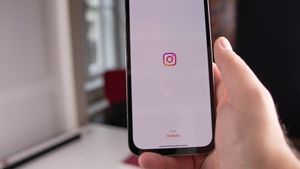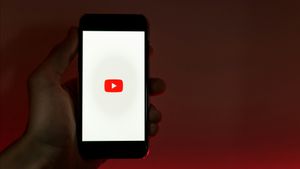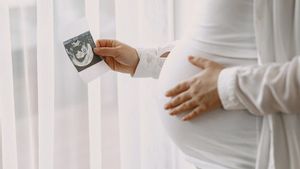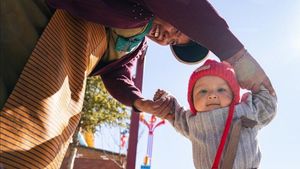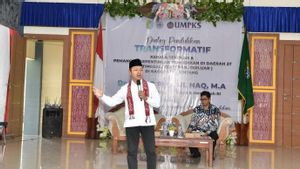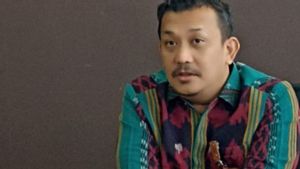JAKARTA - A delivery facility that can grow up to 30,000 babies per year in an artificial womb can overcome the low birth rate in the world. Elon Musk believes this low birth rate is the most significant threat to human civilization.
The video of a new concept brings viewers on tour via The EctoLife Artificial Womb Facility, where hundreds of fetuses sit in transparent pods whose temperatures are controlled and display navels to receive oxygen and nutrients.
Hashem Al-Ghaili, a film and biotechnology producer, creates life-like films to start conversations about technology that will allow women whose uterus is lifted to give birth, reduce premature birth and combat population decline.
The process will use invitro fertilization, allowing parents to choose the most appropriate and genetically superior 'embrio', which can also be genetically engineered to adapt properties, including physical strength and eliminate congenital diseases.
While the video is a concept, Al-Ghaili said it was based on '50 years of innovative scientific research conducted by researchers around the world,' and such giving birth pods could be widespread in 'only decades' from now on.
The video is played like an advertisement for EctoLife, which allows couples not to thrive to carry babies.
This facility features 75 laboratories, up to 400 growth pods each designed to replicate real-life conditions from the mother's womb and includes sensors that monitor baby vital devices. These include heart rate, temperature and oxygen saturation.
This Pods is also equipped with a camera powered by artificial intelligence that continues to scan the fetus for potential genetic abnormalities and monitor the overall growth process.
Parents are given an app that plays live footage of their baby in the pod, along with displaying vital signs.
The video also mentions that parents can record messages that will be played in an artificial uterus and create music playlists for their baby.
While the video is focused on increasing birth rates, it is also noted that maternity farms are for women who are afraid of pregnancy due to the pain and recovery needed after giving birth.
"Say goodbye to pain while giving birth and muscle contraction," the video says. EctoLife provides a safe and pain-free alternative that helps you give birth to a baby without stress."
The birth process requires parents to press the button in the pod. The liquid is removed from the inside and the artificial uterus opens, allowing parents to hold their babies for the first time.
This video looks like a scene from the 1999 film The Matrix is just a concept for now, but it can be used in the future as the world faces a decline in population.
Musk said the 'border will collapse' if the decline in birth rates continues during the Wall Street Journal in December 2021.
While the comments were made when the global population reached 7.9 billion, even recently reached eight billion, when the tech maestro warned the world desperately needed humans.
The world’s first artificial womb facility, EctoLife, could incubate up to 30,000 babies a year.pic.twitter.com/xeHwWUzTsK
— samlogic.eth (@samlogic_) December 11, 2022
Birth rates in developed countries have plummeted over the years, which have lowered the overall rate.
The average woman has two and a half children in 2020, compared to five children 50 years ago.
Birth rates are even lower in the UK (1.74) and the US (1.77). Higher education and contraception as well as more women entering the workplace are considered to be behind that alarming trend.
Pod delivery will be an alternative for couples with infertility and those who want to have their own babies.
And the new video may seem like a breakthrough, the artificial uterus has been the talk of the scientific community since 1923, when it was first introduced to a lecture by an British biologist.
Then in 1955, scientists launched a tank that would grow the fetus.
This design features Amic liquid, a machine connected to a central rope, blood pump, artificial kidneys, and water heater.
However, technology is progressing and scientists are thinking of more options developing from pods or tanks.
In 2020, researchers managed to create a feasible artificial uterus in rabbits.
Anthony Atala of Wake Forest Institute for Regenerative Medicine and colleagues created uterine tissue which is cultivated from the hare uterus cell, which they match into biodecomposable calcions.
Pioneered by the team, this broad approach has previously been used in humans to restore the function of tube-shaped organs such as uretra and certain hollow organs, including the bladder and vagina.
Planting biologically engineered devices into 14 rabbits, the researchers show that artificial uterines can create the original tissue-like structure needed to support normal reproduction.
Six months after the female rabbits were implanted with scaffolds, the animal was allowed to naturally mate with fertile males.
"The lightness with the cell construction has a normal pregnancy in the reconstructed uterine segment," said the author of the paper Renata Magalhaes of Wake Forest Institute for Regenerative Medicine.
"This research introduces a new way to potentially make a network replacement that comes from patient cells to treat Rahim's defects," said Magalhaes as quoted by the Daily Mail.
The Baby designer is also not science fiction, as experts have worked tirelessly to perfect the procedure.
Chinese scientists claim to be able to change the human embryo's gene for the first time in 2015, when they were tuning the gene responsible forLEA-thalassemia, a potentially lethal blood disorder, using a germanline editing technique known as CRISPR/Cas9.
CRISPR technology precisely changes the target part of the genetic code.
But researchers say their results reveal "serious obstacles" in using these techniques in human embryos.
The announcement confirmed rumors that some researchers had conducted ethically questioned genetic experiments.
Some scientists reacted horrifiedly to the idea, fearing it could be misused to allow parents to 'choose' the genes they will inherit to their grandchildren.
The English, Chinese, Japanese, Arabic, and French versions are automatically generated by the AI. So there may still be inaccuracies in translating, please always see Indonesian as our main language. (system supported by DigitalSiber.id)
